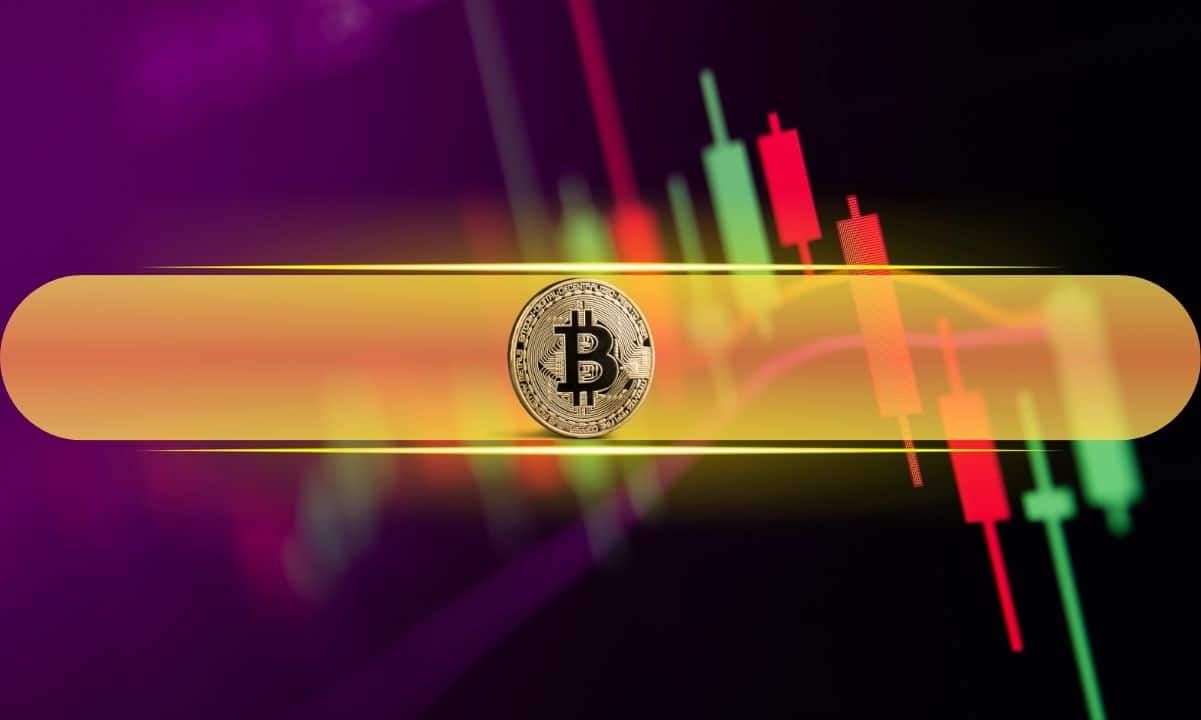Cryptocurrency
Hong Kong allocated another $50 million to the crypto industry

Hong Kong has allocated another $50 million to accelerate the development of the crypto industry after local authorities allocated HK$50 million (about $6.37 million) in late February to develop the Web3 direction. This is stated in a press release on the website of the government.
Legalization of cryptocurrencies in Hong Kong
According to the head of the Financial Services and Treasury Bureau of Hong Kong (FSTB) Christopher Hui, the pool of funds will be allocated, in particular, to organize major international Web3-events. Hui also said that the government will organize educational programs for young people, for which preparations have already begun.
In addition, the 2023 budget provides for the creation of a working group to focus on developing virtual assets and study the situation in the crypto market, development opportunities and the need for changes in regulation.
“Hong Kong is well positioned to become a leading hub for Web3 in Asia and beyond, and we attach great importance to virtual assets (VA) and Web3. The government is committed at a high level to developing this sector and providing a comprehensive support system for enterprises,” Hui said.
He added that the Hong Kong Monetary Authority (HKMA) is now working on regulating stablecoins to introduce them into the economy next year. The country also plans to improve securities regulations so that retail investors can access ETFs based on cryptocurrency futures.
Despite several personal initiatives, Hong Kong authorities are also working closely with mainland China, testing international payments in the digital currency and working with the Central Bank. In all, as of the end of February, more than 80 Chinese companies had expressed interest in operating in Hong Kong.
Bloomberg wrote about China’s support back in late February. The agency pointed out that after Hong Kong set out to develop the crypto industry last October, Chinese officials have become more frequent visitors to Hong Kong. According to sources, this interest is because Beijing wants to use the city as a testing ground for digital assets amid tight control of crypto activity on the mainland.
We previously reported that the collapse of the Silicon Valley Bank is spurring demand for crypto apps.
Cryptocurrency
BONK Explodes by 20% Daily as Bitcoin (BTC) Remains Solid at $108K: Weekend Watch

Bitcoin’s stagnation continues as the asset has made little to no attempt to move away from the $108,000 level.
While most larger-cap alts have produced insignificant gains, TON and BONK have emerged as the biggest gainers on a relatively calm Sunday morning.
BTC Calm at $108K
It has been a quiet period for the primary cryptocurrency. In fact, the latest major price moves came about two weeks ago – on June 23 and 24 – when it dumped to $98,000 before it soared past $105,000 a day later as the Middle East war was going rampantly.
Ever since then, though, the asset has been stuck in a tight trading range between $105,000 and $110,000. It tested the lower boundary on Wednesday, where the bulls stepped up and pushed it south toward the upper one.
On Thursday, BTC showed signs of a breakout attempt when it spiked to a multi-week peak of $110,500, but the bears stepped up at this point and didn’t allow a surge to a new all-time high.
The landscape has been somewhat unchanged since then, as bitcoin quickly returned to $108,000 and has not moved from that level for a few days. Its market capitalization stands strong at $2.150 trillion, while its dominance over the alts is at over 63% on CG.
BONK on the Run
As the graph below will demonstrate, most larger-cap alts are slightly in the green on a daily scale. Such minor increases are evident from the likes of ETH, BNB, SOL, TRX, DOGE, ADA, BCH, LINK, and XRP. In contrast, HYPE and PI have lost some traction over the past 24 hours.
The biggest gainers are TON and BONK. The former has risen by over 9% and sits at $3, while the meme coin has exploded by 20% and now trades at $0.000022.
The cumulative market cap of all crypto assets has remained relatively stable at $3.4 trillion on CG.
Binance Free $600 (CryptoPotato Exclusive): Use this link to register a new account and receive $600 exclusive welcome offer on Binance (full details).
LIMITED OFFER for CryptoPotato readers at Bybit: Use this link to register and open a $500 FREE position on any coin!
Disclaimer: Information found on CryptoPotato is those of writers quoted. It does not represent the opinions of CryptoPotato on whether to buy, sell, or hold any investments. You are advised to conduct your own research before making any investment decisions. Use provided information at your own risk. See Disclaimer for more information.
Cryptocurrency charts by TradingView.
Cryptocurrency
XRP Price Builds Bullish Momentum: Watch This Resistance Level Closely

TL;DR
- Ripple’s cross-border token had a stellar Q4 24 and early Q1 25 but stalled in the following months, and its consolidation phase has not ended yet.
- However, analysts are adamant that the asset can unlock major gains, as long as it reclaims a key resistance level.
The key resistance level for $XRP is $2.38. Breaking above it could trigger a major move! pic.twitter.com/mwpqKBxJKV
— Ali (@ali_charts) July 4, 2025
Basing his analysis on XRP’s UTXO, Ali Martinez determined that this pivotal level is situated at $2.38, where the fourth-largest cryptocurrency faced several rejections in the past few months. However, a conclusive breakout above it could send the token flying, he added.
Shortly after, the analyst with almost 140,000 followers on X indicated that XRP can surge to $2.6 as long as it reclaims $2.33.
BitGuru also outlined the significance of the same two major resistance lines, saying the asset was rejected at the lower one after it confirmed an “inverse head and shoulders and triple bottom pattern.”
With XRP now testing the $2.23 support, the doors open for a surge back to $2.33 as long as it can remain above it, BitGuru added.
Elite Crypto’s analysis is similar to that of Martinez, as they noted that XRP is “showing a strong bullish setup.” They added that “the price is consistently respecting the horizontal support and now approaching the downtrend resistance.”
The analyst predicted that a breakout from this obstacle could result in a massive price surge for Ripple’s token, perhaps to and above the $3.4 all-time high.
$XRP is showing a strong bullish setup as the price is consistently respecting the horizontal support and now approaching the downtrend resistance. A breakout from this zone could lead to a sharp upward move toward the $3.50 range which has acted as a previous resistance level.… pic.twitter.com/TRXv9tYe3n
— Elite Crypto (@TheEliteCrypto) July 5, 2025
Binance Free $600 (CryptoPotato Exclusive): Use this link to register a new account and receive $600 exclusive welcome offer on Binance (full details).
LIMITED OFFER for CryptoPotato readers at Bybit: Use this link to register and open a $500 FREE position on any coin!
Cryptocurrency
Ethereum Price Fell 2% In June But Has These 4 Bullish Signs Going Into July

June was a lackluster month for crypto market gains amid global uncertainty looming over international tariff policy and the future direction of US central bank rates.
US Stocks Outpaced Ethereum In June
For the 30 day window ending Friday, Jun. 27, the S&P 500 Index gained +4.25%.
The push overcame serious resistance from the tariff nail biters and took the broad US stock benchmark to a historic record close Friday.
But after running from $76,200 on 4/8 to $111,600 on 5/22, a +46% gain in a little over a month, Bitcoin’s price took some time to cool down in June. The cryptocurrency charted minor gains, which could be seen as a positive in the face of massive international turmoils and geopolitical shocks.
Meanwhile, Ethereum corrected by 24% before bouncing off the Jun. 22 support to finalize a 2% loss for the 30 days ending Friday, Jun. 30th. So does ETH have a problem that Bitcoin doesn’t?
Not really.
Ethereum is a smaller currency by market cap, about 14% of Bitcoin’s size. Traders still perceive it as a more speculative bet. So it tends to move in the same direction as BTC — by larger percentages.
That means on the way down, losses are frequently greater. But on the way up, gains are often greater too.
For example, during the crypto market’s rally from early April through early June, Bitcoin made a +46% gain. But during the same rally, Ethereum gained +100%, rising from the $1,400 handle to the $2,800 level.
Bitcoin and Ethereum Rainbow Charts
Double rainbow all the way across the sky?
Bitcoin is by and large the biggest leading indicator for the rest of the crypto market’s prices, including Ethereum. It appears to have a long ways to go before topping out this year or next.
Based on popular and authoritative analysts’ price targets for Bitcoin in 2025, it’s pacing to enter July and Q3 at 50% to 66% of its peak price before this cycle is over.
That means it could double or gain by half again its June price levels before the year is over.
Standard Chartered, Bernstein, Galaxy Digital, and Peter Brandt all expect $150,000 to $200,000 for BTC sometime in the next six months.
Bitcoin’s long-term price trend rainbow chart confirms these projections.
Meanwhile, Ethereum’s own long-term trend chart is shaping up to signal a three-peat of a multi-year trend.
If it happens the way it did the last two major market cycles, this Ether prices could be primed to rise by more than Bitcoin’s during the next big monthly rally.
If it turns out to be Bitcoin’s final push for its peak on this cycle as market watchers expect, Ethereum’s gains could signal the start of this cycle’s alt season in meme coins and Layer 2 app tokens.
In addition to the market technical setup for ETH prices in Q3, here are four further bullish signals supporting the leading smart contract platform’s price gains in July.
1. Who Will Win Ethereum L2 Fee Wars?
Ethereum’s price has taken time to absorb the shock of the Dencun upgrade on Mar. 13, 2024.
The upgrade lowers rates for Layer 2 apps to lock in tranches of transaction updates with the base layer chain.
In the 15 months since, developers have deployed a number of new apps with currencies that offer Ethereum services for lower fees.
The base chain’s fee revenue dropped from $30 million annually to $500,000 by Q1 of this year.
That saves users money, but a lot of Ethereum stakers who had their money parked in staking contracts to earn that fee revenue felt inclined to move it somewhere that it could still earn returns on their savings.
This is a massive factor in Ethereum’s sluggish price growth compared to Bitcoin’s over the past year. But it’s not that the latter is falling behind its competitors like Solana and Ripple.
When factoring in the growth of the post-Dencun L2 coins on Ethereum— like Mantle (MNT), POL (POL), Arbitrum (ARB), Optimism (OP), Movement (MOVE), and Starknet (STRK)— the money mostly didn’t leave Ethereum and go to its competitors. It went to another layer, powered by and supporting the base chain.
For that reason, Ethereum may be undervalued by a large number of the cryptocurrency market’s headline readers that don’t understand what happened.
Ethereum Identity Crisis?
Some have referred in the mean time to this awkward stage in Ethereum’s growth as an identity crisis. It’s an open platform and anyone can build on it in any way that the code can handle.
The question for Vitalik Buterin and crypto market investors who show up to value early is:
Will one of the slew of Ethereum scale and fee apps, some new app we haven’t heard of yet, or an upgrade be what implements the best ultra long term, future proof, platform-wide standardizations that define the network’s global advantages?
Find the answer to that question and you’re doing some real work.
2. SharpLink $30M ETH Buy
In another positive development, the corporate treasury race that started for Bitcoin supplies continues to rock the Ethereum markets.
SharpLink Gaming, bought another $30 million worth of ETH just before the Ether price chart threw a small cup and handle pattern. But why does this matter? Well, let’s see what happened to STrategy.
Led by founder and executive chairman Michael Saylor, Tyson’s Corner, Virginia-based Strategy Inc. and Bitcoin have both benefited from the company’s pivot in 2020 to simply pile up as much BTC as it can hold on to forever.
As a result of the cryptocurrency’s increasing popularity with investors since then, MSTR stock rallied 566% in under 11 months from $63 per share on Jan. 5, 2024 to a price peak of $420 on Nov. 22, 2024.
Over that same time, the S&P 500 Index rallied 27% from the 4697 level to 5969.
Every $100 spent on Strategy stock on Jan. 5 last year could be sold for $666 dollars on Nov. 22, paying back buyers $566 for saving their $100 with MSTR shares for a term of 11 months.
That’s like a downpayment on a new car lease with a high credit score.
Meanwhile, $100 spent on an S&P 500 ETF would have returned buyers $27. That’s more like a cheap dinner out for two. All for the same hundred bucks and the same 11 months.
That suggests regulated Wall Street investors wanted on to the Bitcoin bandwagon and found a way in Strategy stocks. Seeing the bullishness of corporate finance, Internet crypto markets were now racing Strategy to accumulate a scarce supply of BTC tokens.
Now, SharpLink is doing it again with ETH. The company’s stocks spiked over 8 days in late May from $3.76 per share to just under $80 a share as Wall Street rewarded the former gaming company for pivoting to accumulating a regulated corporate Ether treasury.
3. $39M ETH Whale Bite
Meanwhile, an Ethereum whale took a $39 million chomp out of the crypto dip on 6/22.
Ethereum’s forward outlook was too good for this whale not to bite at that 24% off discount tag.
Every token is a vote with a daily trading value that fluctuates on a global open market of crypto exchanges. Participants “vote” by locking, unlocking, moving, and swapping currencies, as often as they like, any time they like.
When crypto investors take Ether tokens off a crypto exchange, the remaining supply of ETH tends to attract higher prices at the point of sale. But when they stake ETH for yield, it creates even more support.
4. Bit Digital Drops $34M BTC for ETH
Not to be outdone by SharpLink, publicly traded, New York-based blockchain company Bit Digital, announced on 6/25 it is giving up $34 million worth of BTC tokens to move the proceeds into Ether and develop staking strategies.
They might profit well from determining in advance of the overall market which of the Ethereum scale and fee coins will deliver the most yield and gains together over timespans relevant to their balance sheet and calendar.
Binance Free $600 (CryptoPotato Exclusive): Use this link to register a new account and receive $600 exclusive welcome offer on Binance (full details).
LIMITED OFFER for CryptoPotato readers at Bybit: Use this link to register and open a $500 FREE position on any coin!

 Forex3 years ago
Forex3 years agoForex Today: the dollar is gaining strength amid gloomy sentiment at the start of the Fed’s week

 Forex3 years ago
Forex3 years agoUnbiased review of Pocket Option broker

 Forex3 years ago
Forex3 years agoDollar to pound sterling exchange rate today: Pound plummeted to its lowest since 1985

 Forex3 years ago
Forex3 years agoHow is the Australian dollar doing today?

 Cryptocurrency3 years ago
Cryptocurrency3 years agoWhat happened in the crypto market – current events today

 World3 years ago
World3 years agoWhy are modern video games an art form?

 Commodities3 years ago
Commodities3 years agoCopper continues to fall in price on expectations of lower demand in China

 Economy3 years ago
Economy3 years agoCrude oil tankers double in price due to EU anti-Russian sanctions























